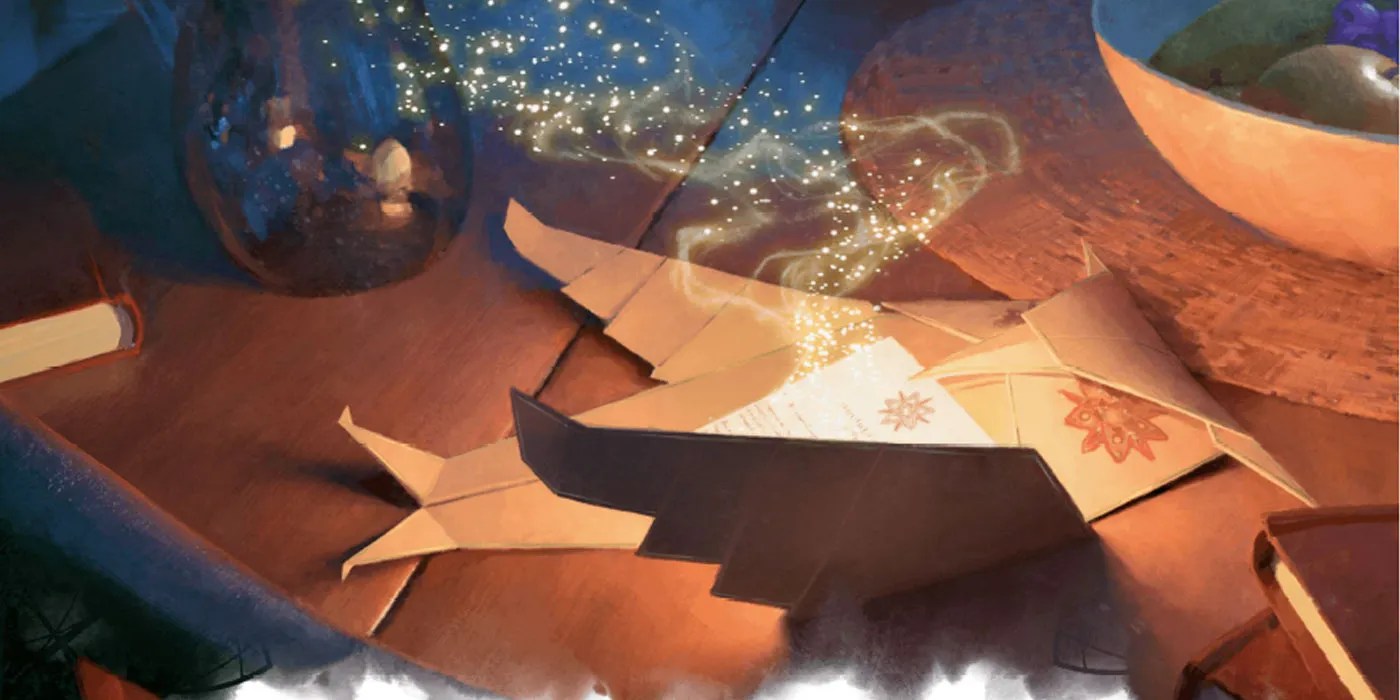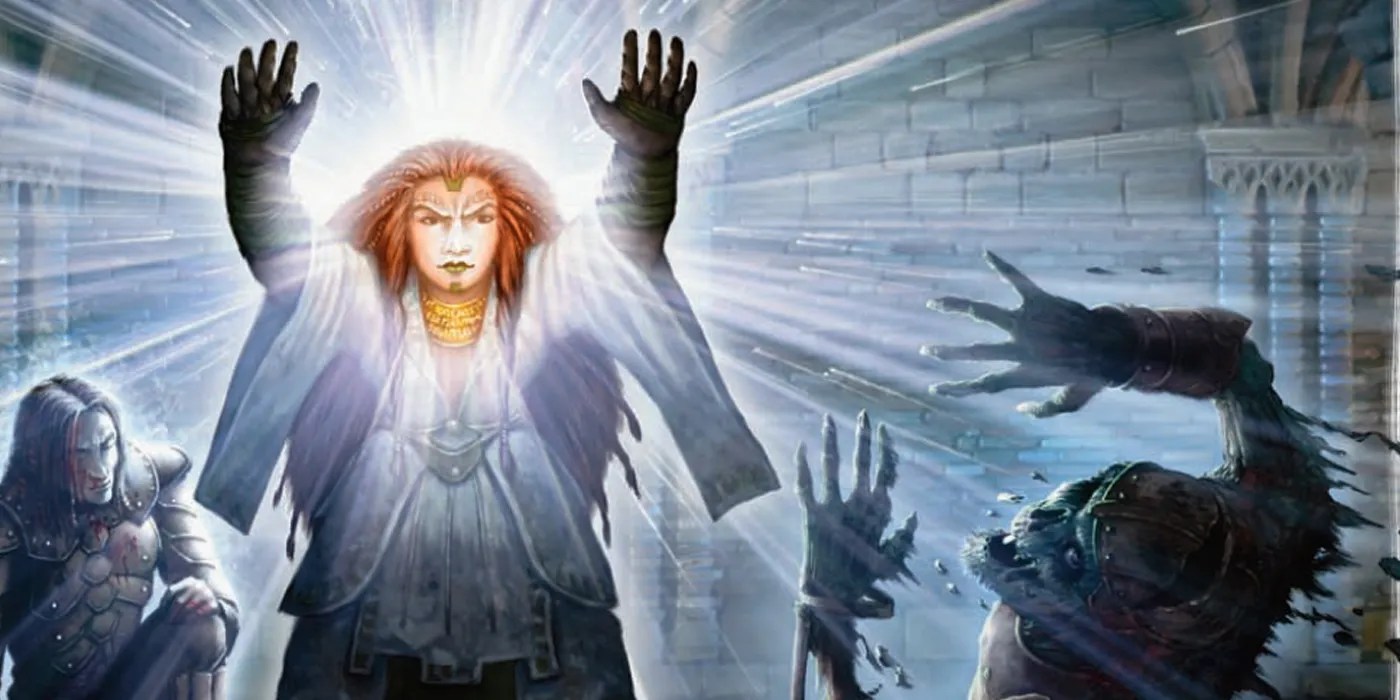Summary
Fans ofDungeons & Dragons 5eknow their spells can spell the difference between successful encounters and a grim demise. After all, spells devastate entire battlefields, charm and amaze others, or even make difficult situations much easier to bear with. Moreover, adventuring parties need spellcasters to tap into their magical prowess to provide a wealth of advantages to their comrades.
However, characters should start to consider using their spell list to achieve more creative effects. Players interested in transforming their spellcasting experience inD&D 5ecan capitalize on certain spells to achieve a wide variety of feats that can greatly benefit their parties.

Updated on July 15, 2025, by Rhenn Taguiam:With 2024 marking the release of One D&D and the upgraded Player’s Handbook for Dungeons & Dragons 5th Edition, fans of the acclaimed TTRPG might be curious as to the kind of new adventures they could do with the changes to mechanics about to be put in place. In the case of Spellcasters, new rules regarding Spells may change the dynamics they have with the game - meaning players may have to alter their arsenal to more accurately follow the change in rulesets. Thankfully, Spellcasters can have reliable Spells in their arsenal that won’t necessarily break the rules in order to be helpful. Some of these Spells include minor illusory effects, the ability to summon a spirit beast, the ability to summon the undead, and even the go-to attack of some mages.
Up to 1 Minute

Classes
Cleric
Essentially the Cleric’s version of Prestidigitation,Thaumaturgy (Transmutation Cantrip)allows the Cleric to use a bit of their holy connection to create “effects” that the faithful could otherwise attribute to the divine. These effects are minor wonders that can range from booming voices, controlling existing fire, causing harmless tremors, generating an instantaneous sound, suddenly manipulating a door or a window, and altering their eyes’ appearance.
Clerics can use up to three of these effects at a time for its one-minute duration, and they need an individual Action to be dismissed. Compared to Prestidigitation, Thaumaturgy can be quite limited in its uses. However, a Cleric who needs to be a temporary face of the party may have use for Thaumaturgy’s effects.

When To Use Thaumaturgy
Considering the limited uses of Thaumaturgy, a Cleric won’t have much use for its effects in combat. However, Thaumaturgy can be more creatively used in the context of conversations and outside dungeon affairs. A Cleric can use this to convert the unfaithful or even minor enemies to their cause, while it can also scare other people into submission. Alternatively, a Cleric in hiding can use its effects to accompany a Bard or a party’s face in order to improve their performance during a conversation.
Up to 1 Hour

Bard, Sorcerer, Warlock, Wizard
Whereas illusionists have their neat bag of tricks, Spellcasters inDungeons & Dragonsgameplay havePrestidigitation (Transmutation Cantrip)as a nifty way of demonstrating their magical prowess without necessarily giving away their secrets. When activated, a Spellcaster can extend their gift of the arcane to create mundane effects: an instantaneous and harmless sensory effect, manipulating a source of fire, cleaning or dirtying an object, manipulating the temperature of an object, generating a mark in an object, or creating a non-magical illusory hand-sized image.
Up to three of these effects can be cast at once, each lasting for an hour, and can be dismissed as an Action. Despite its rather mundane effects, Prestidigitation can be a party’s backup illusory Spell against NPCs and other easily gullible citizens.

When To Use Prestidigitation
Despite its rather simple effects, players can take advantage of Prestidigitation if they want to confuse or convince opponents from a sensory standpoint. A pretend doctor or scientist could use Prestidigitation to cause sensory effects that can convince a patient or even a villain of something being in effect. Likewise, Prestidigitation can be used to distract an audience for other things to take place, such as a heist or sneaking into a location.
Unoccupied Space
Components
Verbal, Somatic, Material (200gp worth of fishtail, tuft of fur, and a feather inside a gilded acorn)
Druid, Ranger
Debuting inTasha’s Cauldron of EverythingisSummon Beast (2nd-Level Conjuration), a relatively low-level summoning Spell that can provide Spellcasters with many companion options that can greatly augment their party. Its hour-long duration with environmental and Spell Level-dependent bonuses allows players to have beasts that breathe underwater (Water Breathing, Water Spirit), can fly away without provoking Opportunity Attacks (Flyby, Air Spirit), or have Advantage when attacking within melee range of the caster or their ally (Pack Tactics, Land and Water Spirit).
This ability to “create” a companion based on preference can encourage players to get more creative regarding timing and maximizing their summons. The hour-long duration can also last an encounter or two and may incentivize the usage of higher-level Spell Slots for a guaranteed stronger ally instead of a one-time powerful Spell.

When To Use Summon Beast
The best way to use Summon Beast is ideally in conjunction with the party’s melee attackers. This allows Summon Beast to take full advantage of its Pack Tactics (as Land or Water Spirits), especially its Multiattack should players cast it at a higher-level Spell Slot. Its potential to have a relatively high AC can also make it an effective scouting and ambushing companion.
A creature within range

Sorcerer, Wizard
Perhaps the cookie cutter Spellcaster attack inDungeons & Dragonsgameplay,Magic Missileis an ever-reliable ranged spell attack option that Wizards and Sorcerers can use instead of cantrips. At its core, one cast of Magic Missile releases three darts that deal a guaranteed 1d4+1 Force Damage at the target. Each Spell Level of an upcast releases another dart.
At its core, this means a 1st-Level Spell Slot worth of Magic Missile will deal an average of 10.5 Damage per cast. While at first glance not “remarkable” for a 1st-Level damaging Spell, its selling point for having a cost in the first place is the fact that each dart is a guaranteed hit.

When To Use Magic Missile
Where Magic Missile truly shines as an offensive option is by the time players start comparing its performance against other similar 1st-level Spells that deal damage. Extra effects notwithstanding, Magic Missile’s 10.5 Damage average is still higher than the average of 9.8 Damage for Guiding Bolt, 9.45 Damage for Chromatic Orb, and 8.75 Damage for Chaos Bolt. While Inflict Wounds can deal an average of 11.55 Damage, it does require getting up close and risking a hefty melee counter-attack in exchange for this damage difference.
A corpse or pile of bones

Verbal, Somatic, Material (a pinch of bone dust, a piece of flesh, a drop of blood)
Cleric, Wizard
Players who want to dabble in the dark arts can rely onAnimate Dead (3rd-Level Necromancy)to create the most basic of undead servants in. They simply need a Medium or Small-sized corpse or even a pile of bones to transform into a Skeleton or Zombie they can manipulate via a Bonus Action. Corpses the Spellcaster controls with this method will take their turns at once, and stay under their control for 24 Hours before being able to refuse commands. Up to four creatures can be controlled this way, with room for two unholy servants per upcast.
Skeletons summoned this way get 14 DEX and 10 STR, making them ideal for Medium Armor and Finesse weapons that rely on the DEX Mod. Since they can be commanded, they can be ordered to do a variety of things - and they’re best used as cannon fodder for enemies.

When To Use Animate Dead
While a necromancer can theoretically use all their individual Skeletons’ turns to move them about, it’s better for Animate Dead’s Spellcaster to instead hand over control of one to two Skeletons to each ally. This way, everyone gets a Skeleton minion to combo out of or even defend them in combat. It’s ideal to use Animate Dead with at least a 4th-Level Spell Slot, as this immediately lets them control three Skeletons instead of just one.
25Encode Thoughts
Enchantment Cantrip
People in the arts often say their works are not how they “imagined” them, and for those with mastery over spellcraft,Encode Thoughtsmay finally help them reveal what their minds truly want to say. With only a mere Somatic component,this Enchantment Cantripallows spellcasters to literally “pull” a thought from their minds and manifest it into tangible strings called a thought strand. This can be as specific as a message or a more vague image, such as an idea or a memory.
When cast, the thought strand manifests within five feet of the caster and persists for eight hours until “read” via someone casting Thought Strand or Detect Thoughts. Physically speaking, the thought strand is weightless and can be carried around like a ribbon. While concentrating on mind-reading Spells such as Detect Thoughts or Modify Memory, the Wizard can cast Encode Thoughts to convert a target’s thoughts into thought strands instead.
24Distort Value
1st-Level Illusion
One of the most entertaining ways of using Minor Illusion is to “fake” the value of an object to make it more valuable than it seems. Thanks toDistort Value, spellcasterslikeD&DWarlockshave a more targeted way of adjusting an object’s value without relying on Minor Illusion’s vagueness. When cast with a Verbal component, the 1st-Level Illusion can affect any object that won’t exceed a foot in size across all sides.
Distort Value can adjust the perceived value of an object by adding flourishes or dents. Players with a knack for talking their way to get money out of merchants can earn quite a lot with DIstort Value unless an observer rolls a successful Investigation (INT) check against the caster’s Spell Save DC and breaks the illusion.
23Fireball
3rd-Level Evocation
Perhaps the quintessentialD&DSpellFireballis an immensely powerful combative Spell accessible at a relatively early part of a Spellcaster’s career. It only takes one Action to cast andhas an instantaneous effect, wherein a streak of fire heads to a point within range and then explodes into a huge ball of fire.
Any creature within the 20-foot-radius sphere needs to take a DEX Save or risk taking the full brunt of 8d6 Fire Damage on a failure. Not only that but the Spell is enhanced with 1d6 for each Spell Slot above the 3rd level the player uses. Once players access this Spell, it’s a no-brainer of a Spell to use against mobs.
When To Use Fireball
Despite the potential carnage a Fireball could cause, one can’t deny the sheer efficiency of base 8d6 damage in a 20-foot radius that can be cast from as far as 150 feet. Players who need a reliable AOE Spell to cast in a large enough area won’t go wrong with Fireball. Given its straightforward nature, the only risk element here is using Fireball close enough to areas with ramifications - that is, being close to large structures and other flammable materials.
22Wall Of Force
5th-Level Evocation
Perhaps one of the best defensive Spells in the game,Wall Of Forceis quite a formidable Spell forany Class or Subclasswho knows how to use it. When cast, this Spell causes an invisible wall of force to appear at a specified orientation and direction the caster wishes. This “Wall” can also become a 10-foot hemisphere or a flat surface of ten 10x10 invisible panels that are 1/4 inches thick.
What’s interesting about the Spell is how it affects people that interact with it. At its core, nothing physical and ethereal can pass through the wall, and can’t even be dispelled by any form of dispel magic as well as immunity to all damage types. The only type of magic that can destroy a Wall of Force is a Disintegrate Spell.
When To Use Wall of Force
The nigh-impenetrable Wall of Force is best used when trying to encapsulate a powerful enough creature or villain who poses a threat that can’t be dealt with immediately. The casting time of 1 Action should be enough to separate the biggest bad in a crucial encounter, and it becomes a rather efficient deterrent if the creature-to-trap has given a hint that they don’t have access to Disintegrate (6th-Level Transmutation). Players who want dialogue with a villain may use this to safely proceed, and they can use the 10-minute duration of the Spell to escape an otherwise dangerous foe.
21Light
Evocation Cantrip
One of the most useful Spells inD&D 5ecomes in the form of a brightening Spell, and quite literally. At its core,Lightallows the Spellcaster to touch any object not larger than 10 feet and have it emit bright light and dim light in a 20/20-feet radius, respectively. This Spell proves especially useful fordungeon-dwellerswho have no access to Darkvision and other vision enhancers.
For the duration of the Spell (an hour), the object acts as though it’s a light source, wherein anything opaque or covering the object will also block the light it casts. Light can also be cast on an object held by a hostile creature, although they need to succeed in a DEX Save to avoid the Spell. This is a nifty Spell to have for creatures who don’t have any innate Darkvision capabilities.
When To Use Light
Darkness appears often enough inDungeons & Dragonsgames that it can catch players by surprise. While using a torch to illuminate the room is always an option, it feels cumbersome having to dispose of the torch first before grabbing one’s sword and shield just to fight enemies. In these situations, Light can be a reliable Spell to brighten areas such as rooms in dungeons and lairs, especially for those who don’t have darkvision.